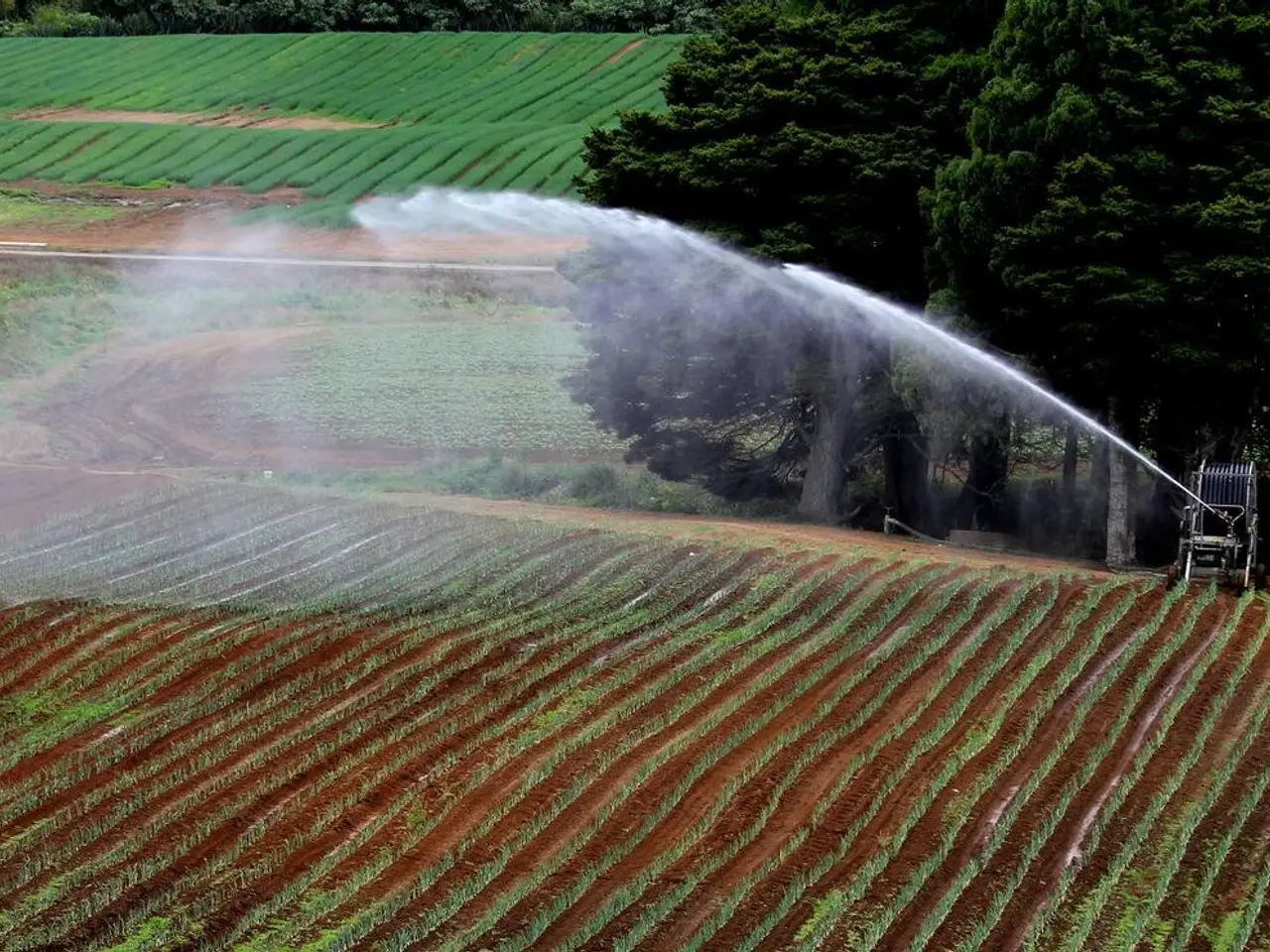Maintaining irrigation systems: strategies for preventing breakdowns
In the quest for a flourishing garden, an efficient irrigation system is key. Regular maintenance is the secret to preventing breakdowns, extending the system's lifespan, and ensuring optimal performance. Here's a comprehensive guide to maintaining your irrigation system effectively.
First and foremost, regular inspections are crucial. Check the entire system for leaks, clogs, damaged or worn components, and proper operation of sprinkler heads and nozzles. Inspect for blockages, wear and tear, and confirm that all nozzle connections are secure.
Adjustments to sprinkler heads and system timers are also essential for even and efficient water distribution. This helps to avoid dry patches or overly saturated areas that can harm plant health and waste water.
Prompt repairs of any damaged parts are vital to maintain optimal system performance and prevent minor issues from leading to costly breakdowns.
Flushing irrigation lines regularly is another essential maintenance practice. This prevents sediment buildup and blockages, which can impair water flow and damage equipment. Flushing is especially crucial if the system operates for extended hours in or out of the growing season.
For systems with pumps, regularly monitor operating pressure, flow rates, and check for leaks or wear in hoses and other components. Obtain and refer to pump specifications and commissioning reports to set benchmarks for future maintenance.
Creating a maintenance schedule is vital to ensure inspections and servicing are done consistently and nothing is overlooked. Establish weekly, monthly, and annual maintenance task lists. Documentation like an irrigation information template aids staff in following best practices.
Water pressure testing is also important. Measure and adjust water pressure to the optimal level to prevent damage to system components and ensure uniform watering coverage.
Adopting a preventive maintenance approach, akin to routine car maintenance, greatly reduces the risk of unexpected failures, lowers long-term repair costs, and keeps the irrigation system running efficiently throughout its operational life.
A system designed with quality components lasts longer and withstands environmental stresses better. Regular maintenance reduces water waste and provides plants with the exact amount of water they need.
Conducting regular tests is crucial for effective maintenance of the irrigation system. Activating each zone at least once a month and closely observing its behaviour can help prevent breakdowns. Unusually wet areas or suspicious puddles should be inspected for potential leaks.
Installing rain sensors can optimize water usage and avoid unnecessary watering during rain. In winter or rural areas, pipes and fittings can be damaged by freezing or animals, requiring a complete inspection at the start of the season.
Regular maintenance can prevent strains and damage to system components, extending its lifespan. To avoid repeating earlier facts, the article does not mention the importance of cleaning filters and nozzles, checking for stable pressure, or inspecting for potential leaks.
Clogged nozzles, misaligned heads, or imbalanced pressure can cause uneven irrigation. Cleaning filters and nozzles every season change or more frequently if the water is very hard is recommended.
Lastly, the irrigation system controller should be checked for correct configuration and adherence to best programming practices. Choosing a system with quality materials can help the system withstand environmental stresses and last longer. Neglecting maintenance can lead to breakdowns and damage to the entire system.
By following these guidelines, you can significantly improve the lifespan and performance of your irrigation system, ensuring a lush and thriving garden all year round.
Maintaining a home-and-garden or home-improvement project's irrigation system requires regular inspections of the entire system for potential issues like leaks, clogs, and worn components. In addition, adjusting sprinkler heads and system timers for even water distribution is vital to prevent dry patches or overly saturated areas. Furthermore, regular maintenance practices like flushing lines, monitoring pressure, and creating a maintenance schedule can significantly improve the system's lifespan and overall performance, thus enhancing the home-and-garden lifestyle by ensuring a lush and thriving garden.




